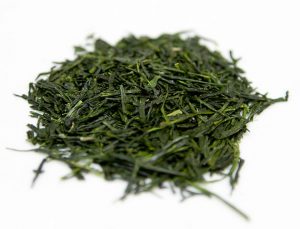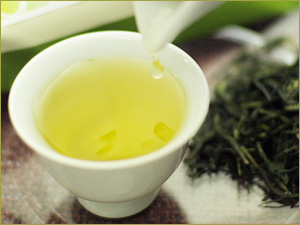 Shincha (新茶, new tea) sounds like a type of Japanese tea and is easily confused with sencha, but it has more to do with the time of harvest.
Shincha (新茶, new tea) sounds like a type of Japanese tea and is easily confused with sencha, but it has more to do with the time of harvest.
You’ll find that the year of harvest is usually included, such as “shincha 2013”.
Shincha enthusiasts are eager to buy it because of it’s limited quantity. However, the price is higher as well.
Although in general shincha refers to first-flush sencha, there’s shincha gyokuro as well.
First Flush, Ichibancha and Shincha
The above terms are closely related. In tea jargon, a “flush” refers to harvest.
There are usually four harvests, with the first flush being the most important one in terms of quality and price. It happens in early spring, but the date changes depending on the region. The leaves had extra time to store nutrients after the winter, that’s why the first harvest is more valuable.
In Japan the leaves from the four flushes are called ichibancha (一番茶), nibancha (二番茶), sanbancha (三番茶) and yonbancha (四番茶). The literal meaning is first, second, third and fourth tea.
Ichibancha and shincha are basically the same. The term shincha is often used when referring to the tea as a product ready to be consumed, while ichibancha is more appropriate when talking about the harvests.
Is shincha any good?
 There’s definitely a difference in taste between shincha and just normal sencha. Shincha has a low astringency and bitterness, while having some sweetness.
There’s definitely a difference in taste between shincha and just normal sencha. Shincha has a low astringency and bitterness, while having some sweetness.
The reason for this is that it’s rich in amino acids while the catechin and caffeine content is relatively low.
Most importantly, shincha has a very fresh aroma which is hard to find in any other tea. You can notice the difference immediately.
Shincha is considered to be the a high grade Japanese green tea and you should brew it accordingly.
Please take a look at my post on how to prepare shincha.
Have you tried shincha yet? Not all tea companies sell it, but it’s worth looking for 🙂

September 3, 2017
Hi,
What a wonderful web you have here. This web has been my quick reference source of Japanese green tea for a while.
I want to ask a bit details about sincha:
1. How many flushes is there in Japan?
I know that there are sincha, nibancha, sanbancha and yonbancha. Does it mean that one specific tea field can be harvested up to 4 times only? or can it be more than 4 times; like, as long as the leaves has growed enough?
2. During one year, does “ichibancha” refer to 1 time plucking activity (the very first plucking happens on one speciific spot on the field),
or does it refer to a range of time (a series of plucking activities might happen during a specified range of time and all is called “ichibancha”; until the field was not harvested anymore until the nibancha period) ?
3. Is there any relation between sincha and the tea that harvested on the 88th day of spring (八十八夜) ?
Thank you very much! really appreciate any help from you! 🙂
Regards,
Josh
September 3, 2017
Hi Joshua, I appreciate your interest in learning more about Japanese tea.
1. While it can be harvested four times, it depends on the region. Sometimes there are fields with only two harvests.
Yes, you can definitely harvest more times if you want, for example having a first flush and after the first layer of leaves decide to harvest the older, more mature leaves too. In that scenario, the older leaves become bancha, even though it was the first harvest of the year. Another example might be when the tea plants are pruned, you can get more leaves in that case.
2. It’s a one time activity, for the best leaf quality. If it could be done more times, it wouldn’t be as significant.
3. The 88th night of spring is around May 2nd. It’s more of a traditional way to determine the harvesting time. It would still be shincha, yes.
September 12, 2018
Hi Ricardo
Thanks for your very informative website.
I wonder for how long packed Shincha is condsidered “fresh”?
And it is slightly confusing that some serious vendors sell first flush sencha simply as sencha not as shincha. Do you have an explanation of this?
Best regards
Martin
September 13, 2018
Hi Martin
Thank you for your comment.
I think that shincha should be at least from the same year, people want to drink it as soon as possible because it’s a seasonal tea.
Often, sencha and other teas are kept in cold storage and they age. So you might be drinking a sencha that isn’t from this year, even though it feels very fresh and is of top quality. In that case, one can’t call it shincha even if it was the first flush, because it’s not from the current year.
Note that there’s nothing wrong with aging green teas in cold storage (which is usually the case for tencha and thus matcha), they become more mellow and still have a wonderful aroma.